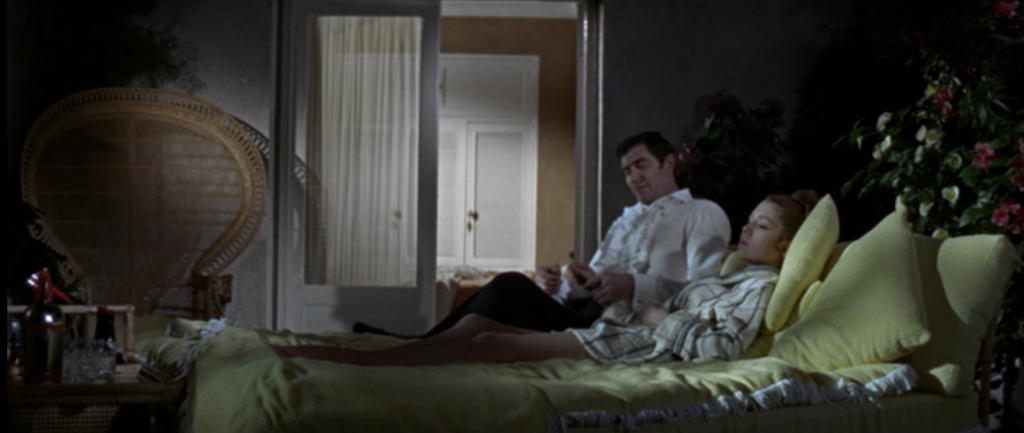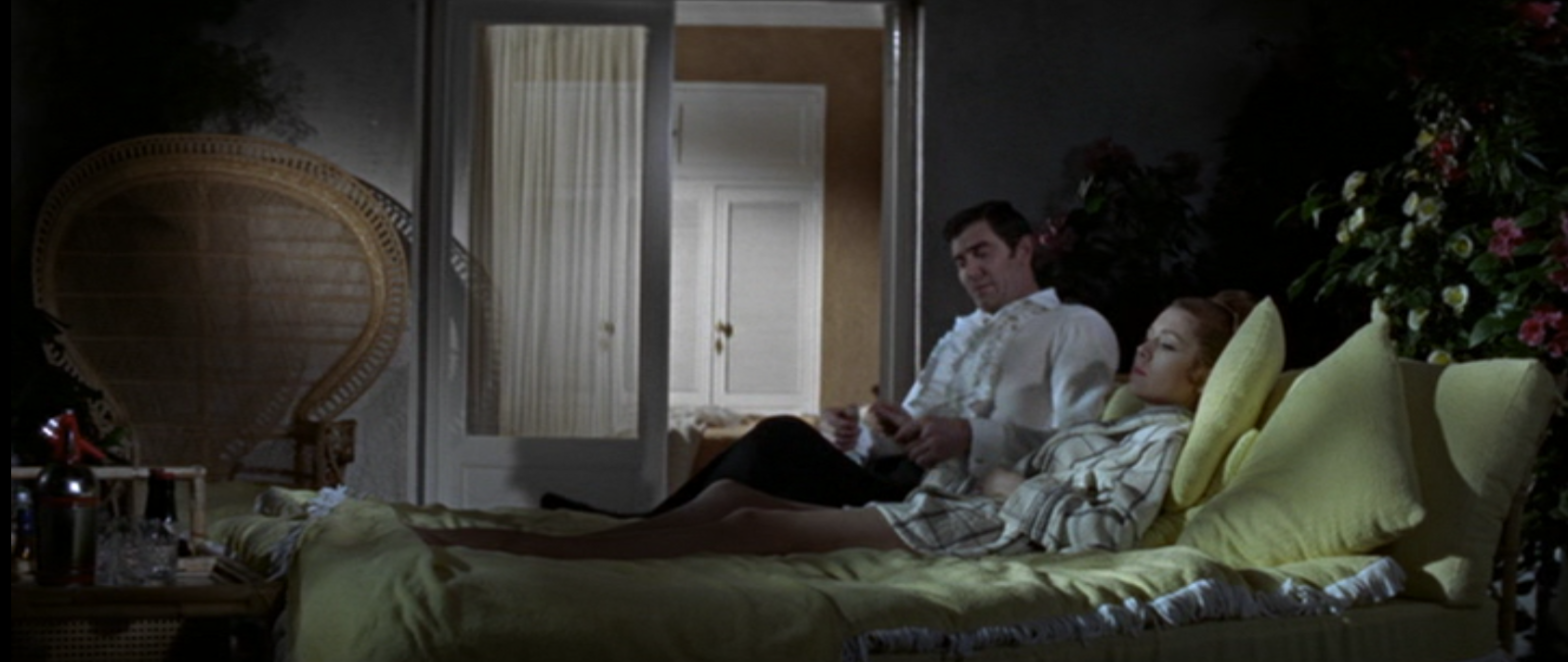Movie Review: On Her Majesty’s Secret Service (1969) directed by Peter R. Hunt
James Bond (George Lazenby), agent of Her Majesty’s Secret Service, is a bit at loose ends. He’s spent the last two years trying to track down Ernst Stavros Blofeld (Telly Savalas) with no luck. M (Bernard Lee) would like 007 to move on to other threats. Happening to see a woman on a lonely beach walking into the ocean, Bond saves her from drowning, only to be attacked by men while she runs away. He runs into the woman again at a casino, saves her from a gambling debt, and they become better acquainted. But the next morning she’s gone, and Bond is abducted by criminals.

It turns out they’re working for Marc-Ange Draco (Gabriele Ferzetti), head of the Unione Corse crime syndicate. The woman, Contessa Therese “Tracy” Di Vicenzo (Diana Rigg), is his daughter. She was neglected growing up, and did things to spite her father, including marrying the late Count. Tracy, too, is at loose ends, and Draco thinks Bond would make a good husband. James demurs, being a confirmed horndog who doesn’t like to be tied down, and also a secret agent with a dangerous job. The offer of money is scoffed at, but Bond is interested in information about the current location of rival crime syndicate SPECTRE’s boss Blofeld.
Tracy sees through this, and while she actually is interested in James, insists her father give up the information rather than dangle it for weeks. After a whirlwind romance, James acts on that info, breaking into a lawyer’s office and learning that Blofeld is now going by ‘Count Balthazar De Bleuchamp’ and is trying to get his title recognized officially. (Blofeld seems truly invested in getting his title “for real”, it’s never proven one way or the other but the balance of evidence is against.) Bond goes undercover, posing as a genealogist to get invited to the secret hideout.
This location turns out to be Piz Gloria, in the Swiss Alps, which can only be reached by helicopter or private cable car. The Count sends his right hand woman Irma Bunt (Ilse Steppat) to pick up Sir Bray, and it’s explained that this is a medical research institute specializing in allergy treatment. There’s a dozen young women from around the world under treatment, some of whom find “Sir Bray” quite tantalizing. Turns out that Blofeld is actually brainwashing these women to spread biological weapons to targeted animals and crops to destroy the supply. If the United Nations doesn’t bow to Blofeld, he will release his weapons one by one.
Bond’s cover is blown. How will he get out of this one and save the day?
This was the only George Lazenby Bond movie, after Sean Connery had done the part in five previous films. Rather than have a regeneration process ala Doctor Who, Lazenby briefly refers to “the other fellow” in the cold open, and then the movie proceeds as though he’s the same character. (The opening titles show bits of the previous movies, and later we see props that had been used previously to emphasize the continuity.)
He’s a perfectly acceptable Bond, and might have grown into the role if he was able to continue. He looks good in a kilt. Diana Rigg is good as Tracy, and Telly Savalas does a decent Blofeld.
The cinematography is very good, especially the aerial shots during the ski chase scenes, which were done using a special harness for the camera operator. (A man dedicated to his job–he’d lost a leg while shooting the previous James Bond movie.) Awesome action sequences and stunts as well.
The music is also of note. The title theme is instrumental so that no one had to try to work “on her majesty’s secret service” into lyrics. And Louis Armstrong gives his final film performance singing “All the Time in the World” over the romance sequence, heartbreaking if you already know how the film ends.
That ending is one of the most notable ones in the film series, and is an influence on Bond’s character going forward.
Gadgets are played down, with the only important one being a combination safecracker/photocopier that Bond has to have delivered by construction equipment.
The scenes with the patients at the institute, the “Angels of Death”, are rather tedious and make the film drag a bit in the middle. Blofeld’s plot involving them has a lot of failure points, but Bond would prefer to just make sure it fails at Step One.
Content note: Violence, often lethal. One kill is particularly gory. Female nudity, usually in shadows or otherwise obscured. (As an in-joke, James picks up a Playboy magazine (where this novel was serialized) and looks at the centerfold rather than reading it for the articles.) As always in Bond films, extramarital sex. Some old-fashioned sexism. There’s a bullfight going on in the background of one scene, but it’s a Portuguese bullfight, which is specifically non-lethal to the bulls. Still could be seen as abusive to the bull.
This isn’t one of the top Bond movies, but it’s solid and important to the character development. (And is unusually close to the book it was adapted from!) Recommended to James Bond fans, and action movie fans who want the romance treated a bit more seriously.

